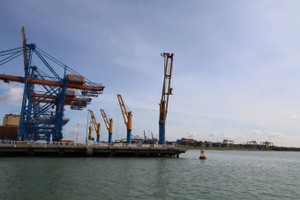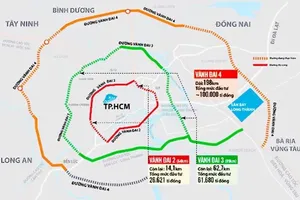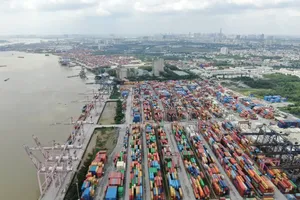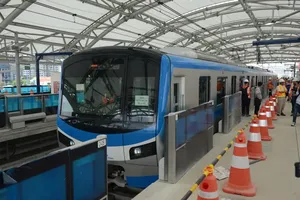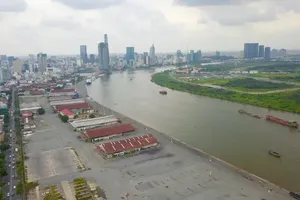)
According to the Southern Hydrometeorological Station, as of today’s morning, the center of typhoon Fengshen was located approximately 130 km north of the Hoang Sa Archipelago. The strongest winds near the storm’s center were at levels 9–10 (75–102 km/h), with gusts reaching level 12. The storm is moving westward at a speed of about 20 km/h.
Forecasts indicate that under the typhoon’s influence, coastal areas of the Southern region and Ho Chi Minh City will experience northeasterly winds in the north and variable winds at levels 3–4 in the south, with wave heights ranging from 0.5 to 1.5 meters. In the waters from Ca Mau to An Giang to Phu Quoc, winds will be light and waves below 1 meter. Both marine areas may experience scattered showers and thunderstorms, with possible whirlwinds and strong gusts of level 6–7 during storms.
In Ho Chi Minh City, weather conditions are expected to include variable clouds, sunny daytime periods, and widespread showers and thunderstorms in the afternoon and evening, with some areas seeing moderate to heavy rain. Residents are advised to be alert for whirlwinds, lightning, and strong gusts.
Deputy Director Nguyen Xuan Hoang of the Department of Agriculture and Environment of Ho Chi Minh City, stated that following the directives of the National Civil Defense Steering Committee, the city’s Department of Agriculture and Environment has urged local authorities and agencies to closely monitor weather updates and forecasts regarding the typhoon.
The People’s committees in communes and island wards, along with the City Border Guard Command, Fisheries Sub-Department, and Coastal Information Station, have been tasked with regularly informing marine vessels and fishing boats about the storm’s developments so they can adjust their operations accordingly.
Local authorities are also organizing efforts to track, count, and record all vessels currently operating in affected areas, maintain communication with vessel owners to ensure safety, and prepare forces, equipment, and resources for potential search and rescue operations.
Yesterday, the Vietnam Disaster and Dyke Management Authority under the Ministry of Agriculture and Environment announced that the National Civil Defense Steering Committee has issued a directive requiring various ministries, agencies, and five localities from Ha Tinh to Quang Ngai to promptly and proactively implement measures to respond to heavy rainfall, the risk of flooding, landslides, and flash floods caused by the influence of the circulation of storm number 12 combined with cold air.
Therefore, authorities in provinces, cities, and relevant ministries and agencies were asked to closely monitor weather forecasts and warnings, and promptly relay information to local authorities and residents to proactively prevent and mitigate risks. Local authorities are required to review and inspect areas along rivers and streams, low-lying regions, and zones with a high risk of landslides and flash floods. They must evacuate residents from these identified hazardous areas.
Localities shall also fully prepare forces, vehicles, and essential supplies. This preparation must strictly adhere to the "four on-site" principle to ensure readiness for a response in the event of prolonged heavy rain and flooding. Furthermore, forces must be assigned to stand guard and control traffic. These personnel will guide people and prevent them from traveling through deeply flooded areas, locations with fast-flowing water, or sites at risk of landslides. It is also imperative to ensure smooth traffic flow is maintained on all main routes. Finally, local bodies must inspect and implement measures to guarantee the safety of critical infrastructure, construction sites, mines, industrial parks, and residential areas.
Also, according to the official dispatch, depending on the actual situation, localities are to decide on granting students leave from school when severe rain and flooding occurs. Ministries and agencies, within their assigned functions, need to closely coordinate with localities in directing the response to heavy rain, flooding, flash floods, and landslides.






)

